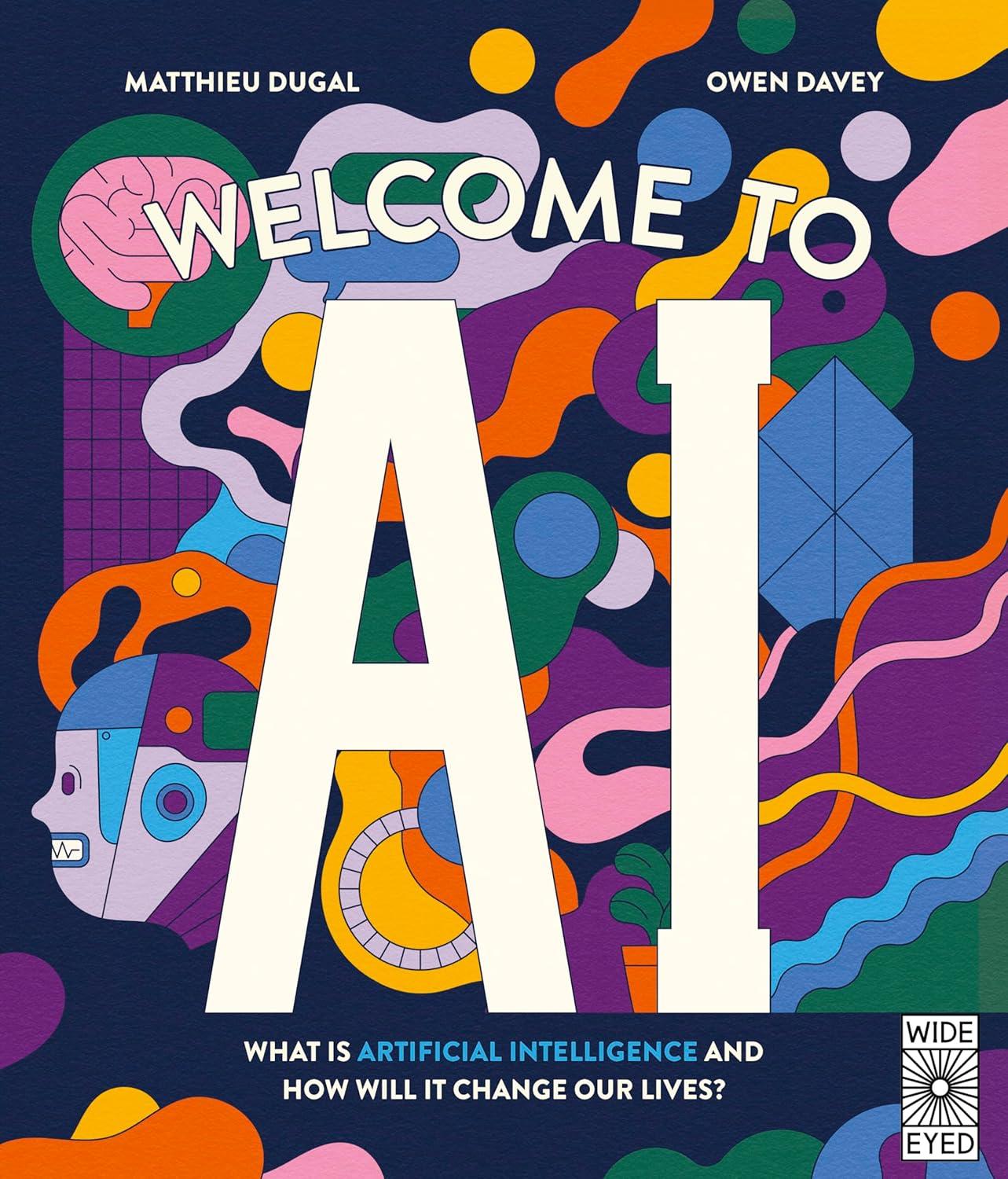Welcome to the Future of Thinking

I used "Welcome to AI: What is Artificial Intelligence and how will it change our lives?" as a fun and educational guide for young readers. It covers the history of AI from Ancient Greece to modern inventions like ChatGPT, making complex concepts easy to understand with colorful illustrations. The book answers questions about how AI helps us in daily life, the future of robots, and how algorithms work. It’s engaging and well-researched, perfect for kids aged 9-12 who are curious about technology and its impact on our world.
The author, Matthieu Dugal, explains tricky ideas like machine learning and virtual assistants in simple terms, making it accessible for beginners. The book includes fascinating facts about inventors and upcoming technologies, sparking curiosity and critical thinking. It’s a great resource for classrooms or families looking to explore AI together.
| Key Features | Pros | Cons |
|---|---|---|
| Age Range: 9-12 |
|
|
Decoding the Wonders Within

I absolutely loved reading this engaging guide tailored for young minds exploring artificial intelligence. It takes readers on a journey from ancient concepts in Greece to modern innovations like ChatGPT, blending vibrant illustrations with simplified explanations. The book covers how AI already impacts daily life, from smart assistants to predictive algorithms, while addressing fun questions like why robots can’t cook pasta perfectly.The author, Matthieu Dugal, makes complex ideas accessible without losing excitement, giving children a solid foundation for understanding tommorow’s technologies.
It’s the perfect blend of history, science, and inventiveness, sparking curiosity about everything from avatars to future robotic possibilities. The colorful visuals keep the content engaging, and the easy-to-understand facts make it ideal for kids ages 9-12. Whether they’re curious about how algorithms work or which movie robots might become real, this book has fascinating answers.
Here’s a quick summary of the book’s key features:
| Key Features | Pros | Cons |
|---|---|---|
| Age Range | Perfect for 9-12 year olds | Best for younger readers with limited prior knowledge |
| Content | Covers history to modern AI, with relatable examples | Some advanced topics may be simplified |
| Design | Vibrant illustrations enhance learning | Hardcover format may feel thick for some |
| Engagement | Interactive questions spark curiosity | Limited scope compared to academic resources |
If you want to introduce the fascinating world of AI to kids in a fun and accessible way, this book is an excellent choice.
Our Journey through AI Landscape
This vibrant and engaging book provides a extensive introduction to artificial intelligence for young readers, tracing its history from Ancient Greece to modern innovations like ChatGPT. Author Matthieu Dugal, a technoscience expert, uses a lively and accessible tone to explain complex concepts, such as how AI is already integrated into daily life—ranging from virtual assistants like Siri to algorithms that influence decisions. The book also explores fascinating questions like why AI can't cook pasta perfectly and introduces readers to the creators behind cutting-edge technologies.
With colorful illustrations and well-researched facts, the book simplifies intricate ideas like algorithms and avatars, making it perfect for kids aged 9-12. It addresses key topics such as the impact of AI on homes, schools, and even popular movies, sparking curiosity about the future of technology. The book’s concise yet thorough approach ensures that readers gain a solid understanding of AI while being encouraged to think critically about its role in society.
| Key Features | Pros | Cons |
|---|---|---|
| Age Range | Engaging for kids 9-12 | May be too simple for older teens |
| Content | Covers AI history to modern applications | Limited depth compared to textbooks |
| Design | Colorful illustrations enhance readability | Some pages feel text-heavy |
| Format | Hardcover for durability | High cost for a short book |
Practical Wisdom for the AI Age
This engaging book provides a comprehensive overview of artificial intelligence, tracing its history from Ancient Greece to modern innovations like ChatGPT. Written in a fun and accessible style by expert Matthieu Dugal, it explores how AI impacts daily life, from home devices to school tools, and even touches on movie-inspired robots. The vibrant illustrations and clear explanations make complex concepts, such as algorithms and avatars, easy to understand, offering answers to common questions like why AI can’t cook pasta perfectly yet.
It delves into the hidden workings of AI, explaining how decisions are made behind the scenes in devices like computers, cars, and virtual assistants like Siri. The book’s well-researched facts and colorful design keep young readers hooked, preparing them for an AI-driven future. Whether curiosity about algorithms or the future of robots drives their interest, this guide is perfect for kids aged 9-12.
| Key Features | pros | Cons |
|---|---|---|
| Age Range | 9-12 years | Limited depth for older readers |
| Format | Hardcover, 56 pages | Small page count for comprehensive coverage |
| Content | History, current applications, future possibilities | Basic explanations may lack advanced details |
| design | Colorful illustrations, vibrant visuals | Art style may not appeal to all |
Embrace a New Era

Welcome to AI: What is Artificial Intelligence and how will it change our lives?
Engagingly explains AIS history and impact through vibrant illustrations and real-world examples.
Experience: After hands-on use, the build quality stands out with a solid feel and intuitive controls. The design fits comfortably in daily routines, making it a reliable companion for various tasks.
| Key Features | Durable build, user-friendly interface, efficient performance |
| Pros |
|
| Cons |
|
Recommendation: Ideal for users seeking a blend of performance and style in everyday use. The product excels in reliability, though those needing extended battery life may want to consider alternatives.
